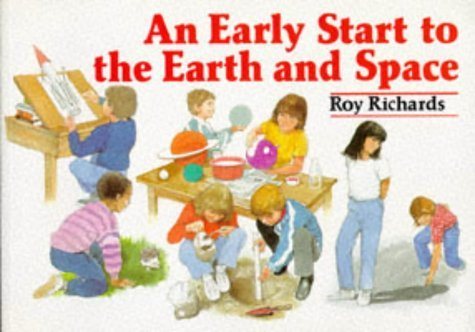Filters
Clear allSubject
- Careers (113) Apply Careers filter
- Climate Change (28) Apply Climate Change filter
- Computing (142) Apply Computing filter
- Creative arts and media (7) Apply Creative arts and media filter
- Cross curricular (288) Apply Cross curricular filter
- Design and technology (544) Apply Design and technology filter
- Engineering (258) Apply Engineering filter
- Food Preparation and Nutrition (43) Apply Food Preparation and Nutrition filter
- Health and safety (1) Apply Health and safety filter
- Leadership (22) Apply Leadership filter
- Mathematics (330) Apply Mathematics filter
- Personal development (25) Apply Personal development filter
- Psychology (21) Apply Psychology filter
- Space (29) Apply Space filter
- STEM Ambassadors (10) Apply STEM Ambassadors filter
- STEM Clubs (21) Apply STEM Clubs filter
Age range
Type
- Activity sheet (524) Apply Activity sheet filter
- Article (21) Apply Article filter
- Assessment (45) Apply Assessment filter
- Audio (6) Apply Audio filter
- Data set (1) Apply Data set filter
- Demonstration (4) Apply Demonstration filter
- Diagram (2) Apply Diagram filter
- Experiment (50) Apply Experiment filter
- Game (16) Apply Game filter
- Group work (7) Apply Group work filter
- Image (40) Apply Image filter
- Information sheet (87) Apply Information sheet filter
- Interactive resource (11) Apply Interactive resource filter
- Open-ended task (12) Apply Open-ended task filter
- Poster (29) Apply Poster filter
- Presentation (183) Apply Presentation filter
- Quiz (3) Apply Quiz filter
- Research (130) Apply Research filter
- Self assessment (3) Apply Self assessment filter
- Teacher guidance (678) Apply Teacher guidance filter
- Textbook (41) Apply Textbook filter
- Video (305) Apply Video filter
- (-) Remove Include Physical Resources filter Include Physical Resources
Showing 5590 results

This book shows how children's natural interest in themselves and their environment can be used as a starting point for discussing a number of topics including the senses, respiration, fossils, evolution and genetics...
Part of a series, this book offers teachers a variety of ways in which they can offer children activities which will introduce them to the scientific basis of the animate/inanimate world. The techniques of exploring, observing, manipulating, comparing and more are encouraged.
Part of a series, this book offers teachers a variety of ways in which they can offer children activities which will introduce them to the way that an understanding of physical science can lead to a parallel understanding of technology.

Part of a series aiming to introduce key subjects to primary school children, this book tackles the concept of earth and space through topics such as rocks and soil, water, the variety of life forms, air and the sky...
This is an investigation of the things and places around us which relates something of their past. It includes ideas and activities designed to encourage children to explore their environment. Topics covered include school, home, streets, shops, weather, churches, building sites, rocks and pebbles, canals, and...
This research article published in 2012 in the Journal of Research in Science Teaching investigates the effectiveness of an integrated science and literacy approach at primary school level. Teachers in 94 fourth-grade (Year 5) classrooms in one US Southern state participated.
Half of the teachers in...
This book introduces the most common British wild flowers in the countryside. There are full descriptions of the colour, shape, size, location and life cycle of each species.
An Introduction to British wild flowers shows children how to identify different flowers by their petals, stems and seeds. Activities...
Published in April 2013 This report from the National Foundation for Educational Research (NFER) presents the findings from an investigation into the views of senior staff with responsibility for determining CPD strategy, within schools and further education colleges.
...This item is one of over 25,000 physical resources available from the Resources Collection. The Archive Collection covers over 50 years of curriculum development in the STEM subjects. The Contemporary Collection includes all the latest publications from UK educational publishers.
This activity allows pupils to simulate the robotic exploration of Mars. Pupils will have the opportunity to take on the role of the rover controlled by mission control as well as being able to build their own remote control rover. Pupils will use a map of Mars to set out regions of interest and hazards before...

This book answers questions such as how did Walter Reed solve the mystery of yellow fever? Will balls of different masses fall at the same speed? This series shows how the reader can accomplish experiments and...

This series shows how the reader can accomplish experiments and interpret the results.

This board game illustrates the human body. The first student to build their body wins. Students can choose between nerves, skeleton, organs and muscles. Body pieces may have to...
A kaleidoscope is an optical instrument in which bits of glass, held loosely at the end of a rotating tube, are shown in continually changing symmetrical forms by reflection in two or more mirrors set at angles to each other.
A kaleidoscope operates on the principle of multiple reflection, where several...

In this book, children discover who made false teeth for an elephant, where they can find dragons with bad breath, and which scientist ate a poisonous snake for dinner.
